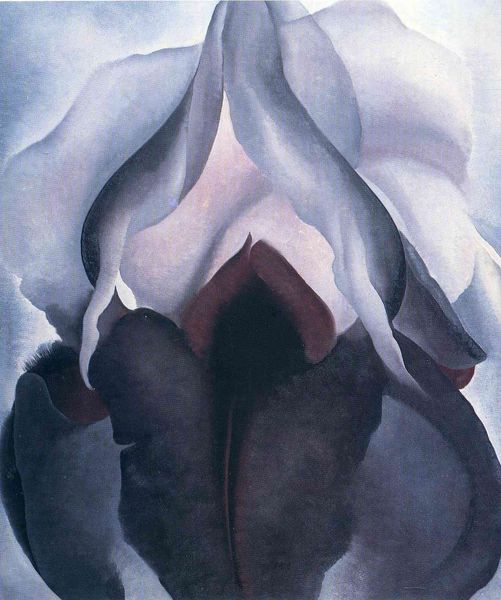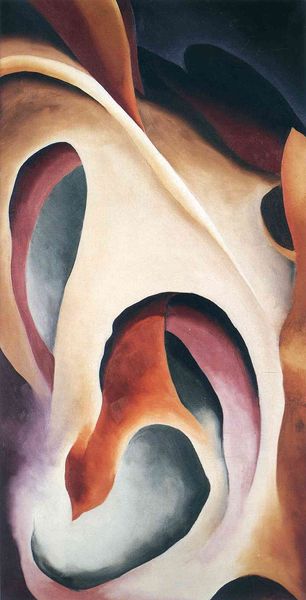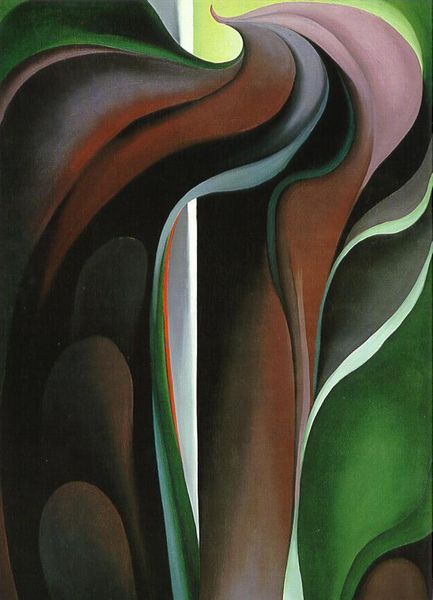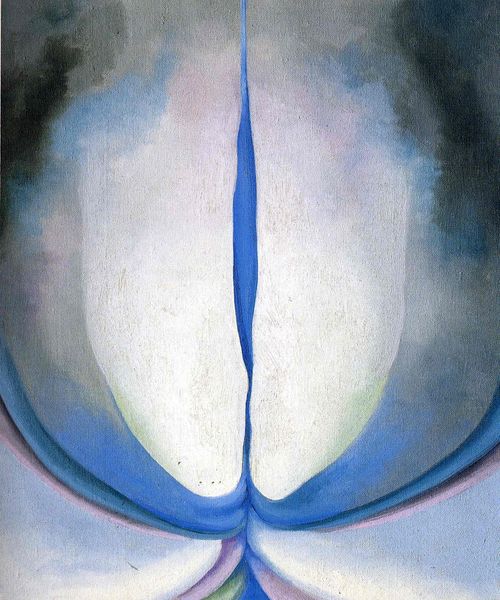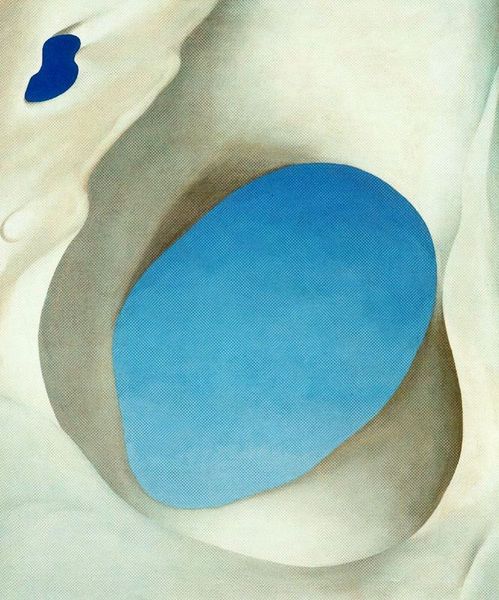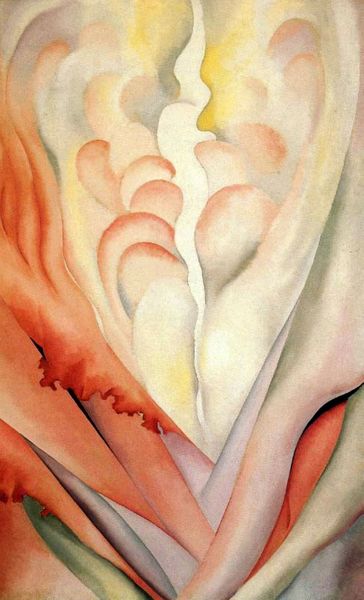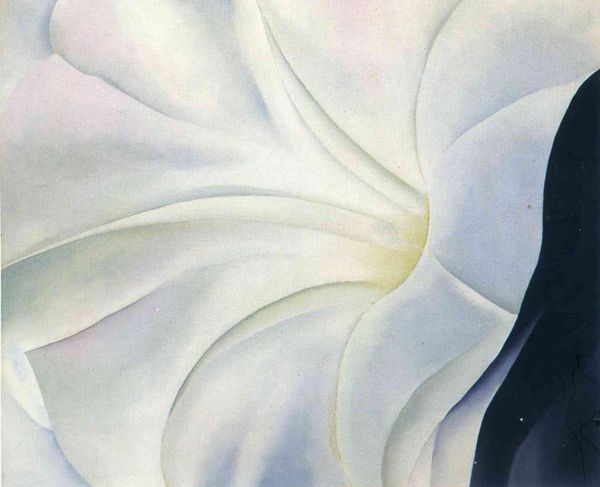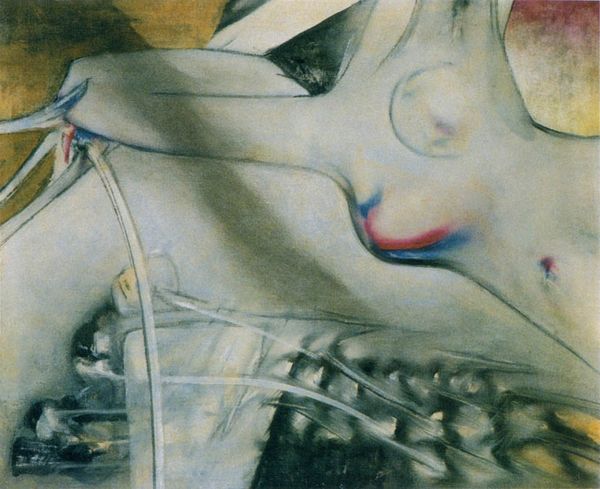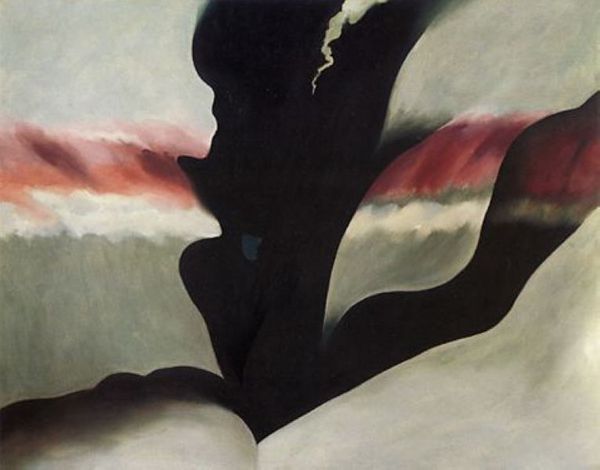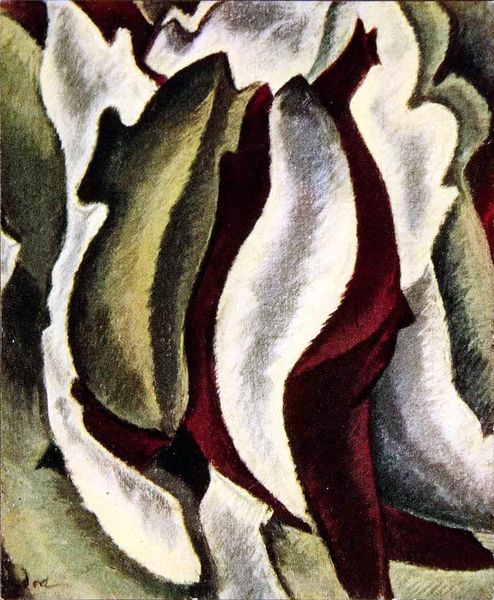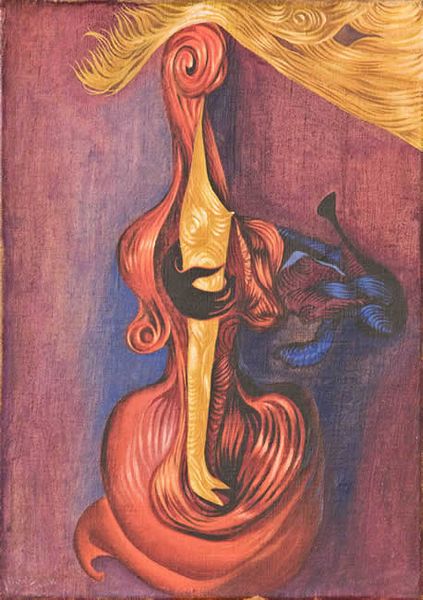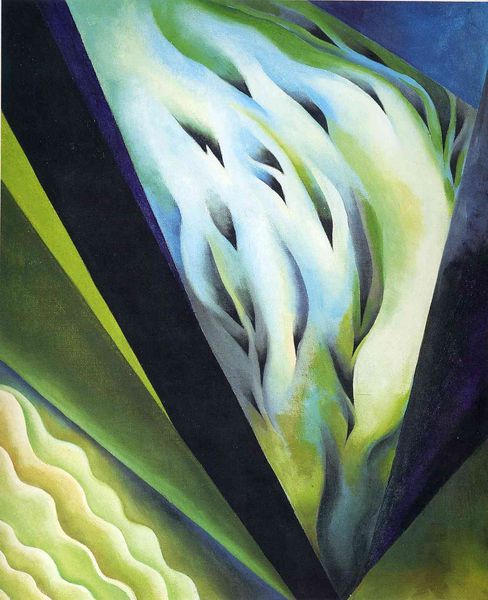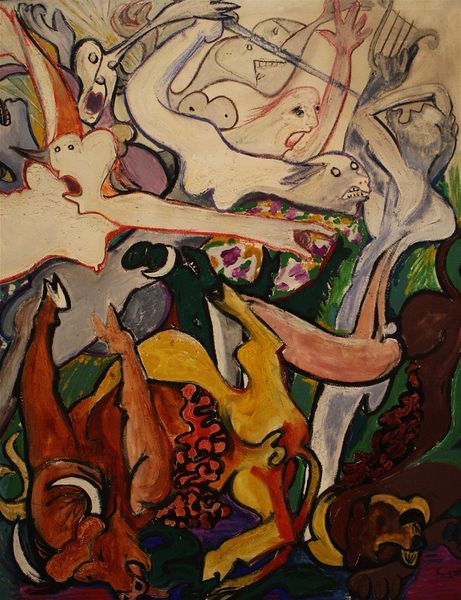
painting, oil-paint
#
portrait
#
precisionism
#
organic
#
painting
#
oil-paint
#
flower
#
oil painting
#
modernism
Copyright: Georgia O'Keeffe,Fair Use
Curator: Let's turn our attention to Georgia O'Keeffe’s "Black Iris." It’s undated, but thought to be from the mid-1920s. What's your immediate impression? Editor: Brooding. It’s far from the typical floral painting. The scale is enormous, making the details almost…anatomical. You can see the distinct brushstrokes where she blends the pigments to render those subtle transitions. Curator: Yes, the up-close perspective is crucial. O'Keeffe was deliberately pushing the boundaries of how flowers are perceived. Traditionally, they symbolize beauty, fragility, fleeting moments, but she’s magnifying it to reveal deeper structures. We read of irises symbolizing hope and faith; what might O'Keeffe convey? Editor: Well, that deep burgundy heart of the flower gives me a sense of something raw and interior. I keep focusing on that color… it’s very earthy and unrefined against those pearly greys, I'd guess an oil paint straight from the tube? It grounds all the subtle blending. I’m wondering, also, where she might have grown or obtained these irises. Curator: The location aspect could tie in. The precise rendering is remarkable and indicative of Precisionism, where industrial and organic forms met in a sharp-edged embrace. It certainly disrupts idealized feminine imagery often assigned to flower painting. There are definite gendered readings linked to the work, both positive and negative. It's fascinating to consider the materials O'Keeffe chose—the cool grays and blacks, the way she manipulated the oil paints to create a sense of depth. Editor: Agreed. She forces the viewer to confront not only the visual intricacies of the flower but also its material reality: the layers of oil, the build-up of pigment, her controlled brushwork. In terms of materials, you would really have to see this up close in person, wouldn't you? To observe the quality of the surface, observe where she layers different paints. You miss that in reproduction. Curator: Absolutely. It reminds us that symbolism is always intertwined with the artist's touch and vision. Thank you for joining me. Editor: Thank you; food for thought!
Comments
No comments
Be the first to comment and join the conversation on the ultimate creative platform.
